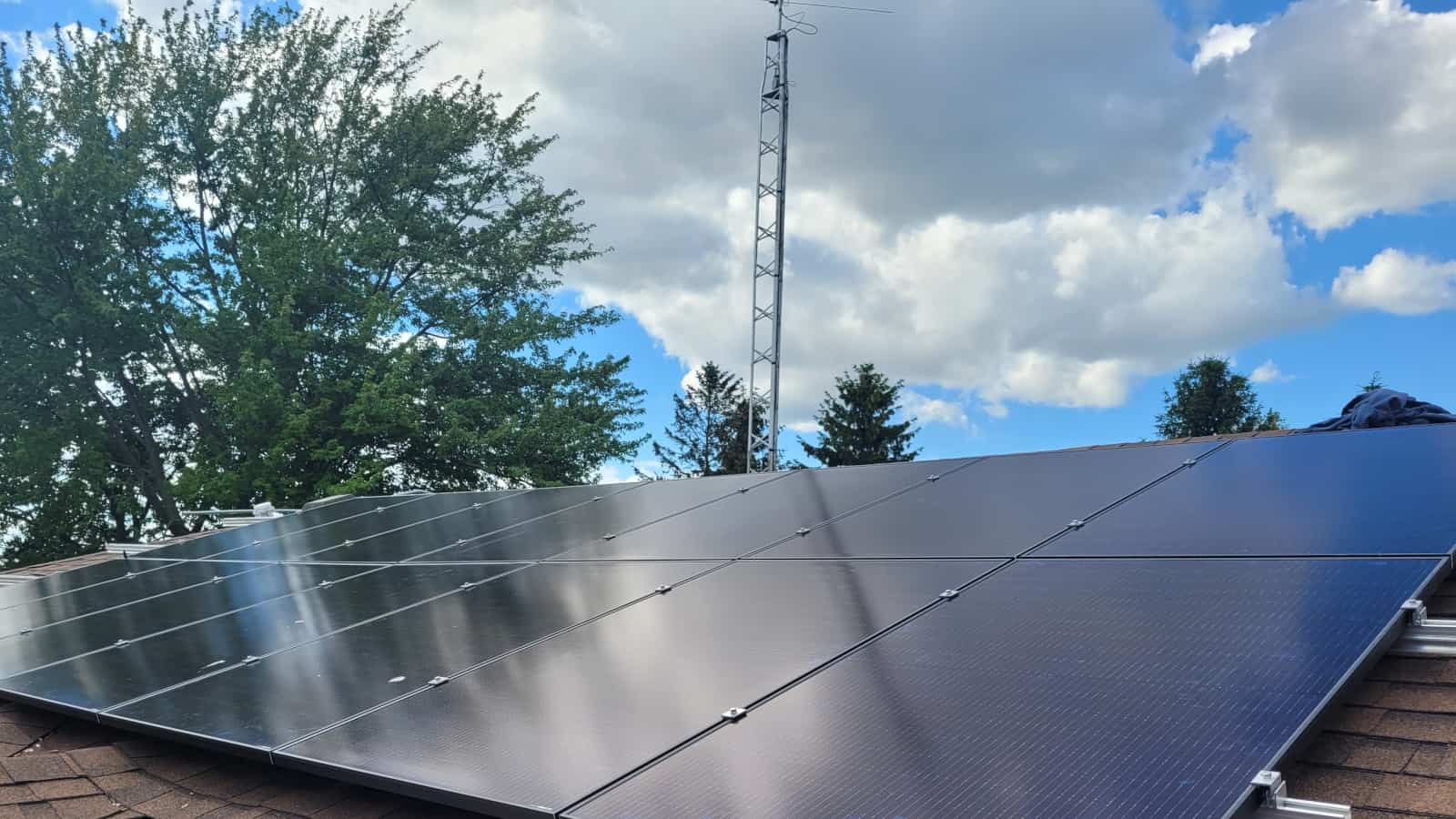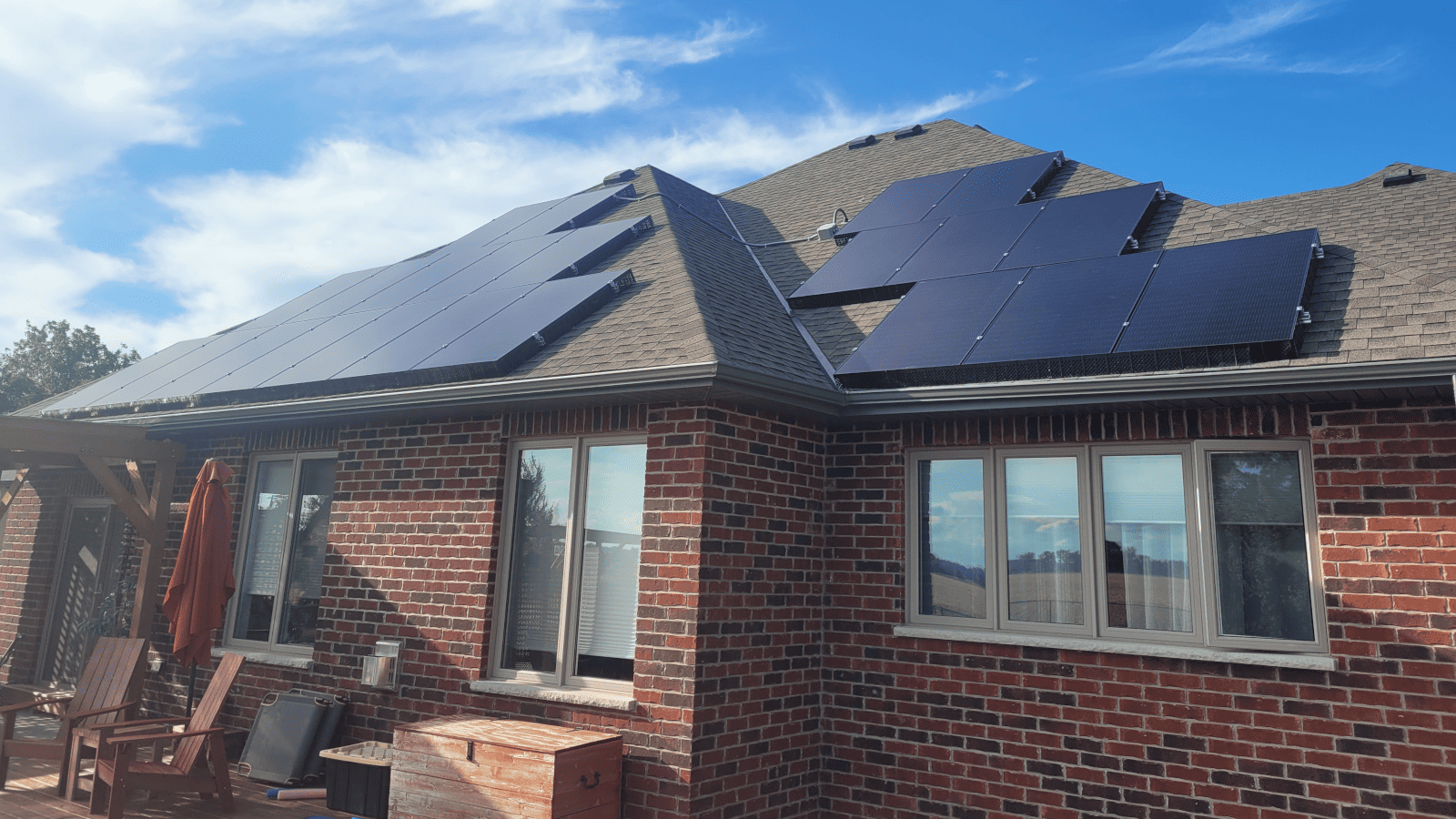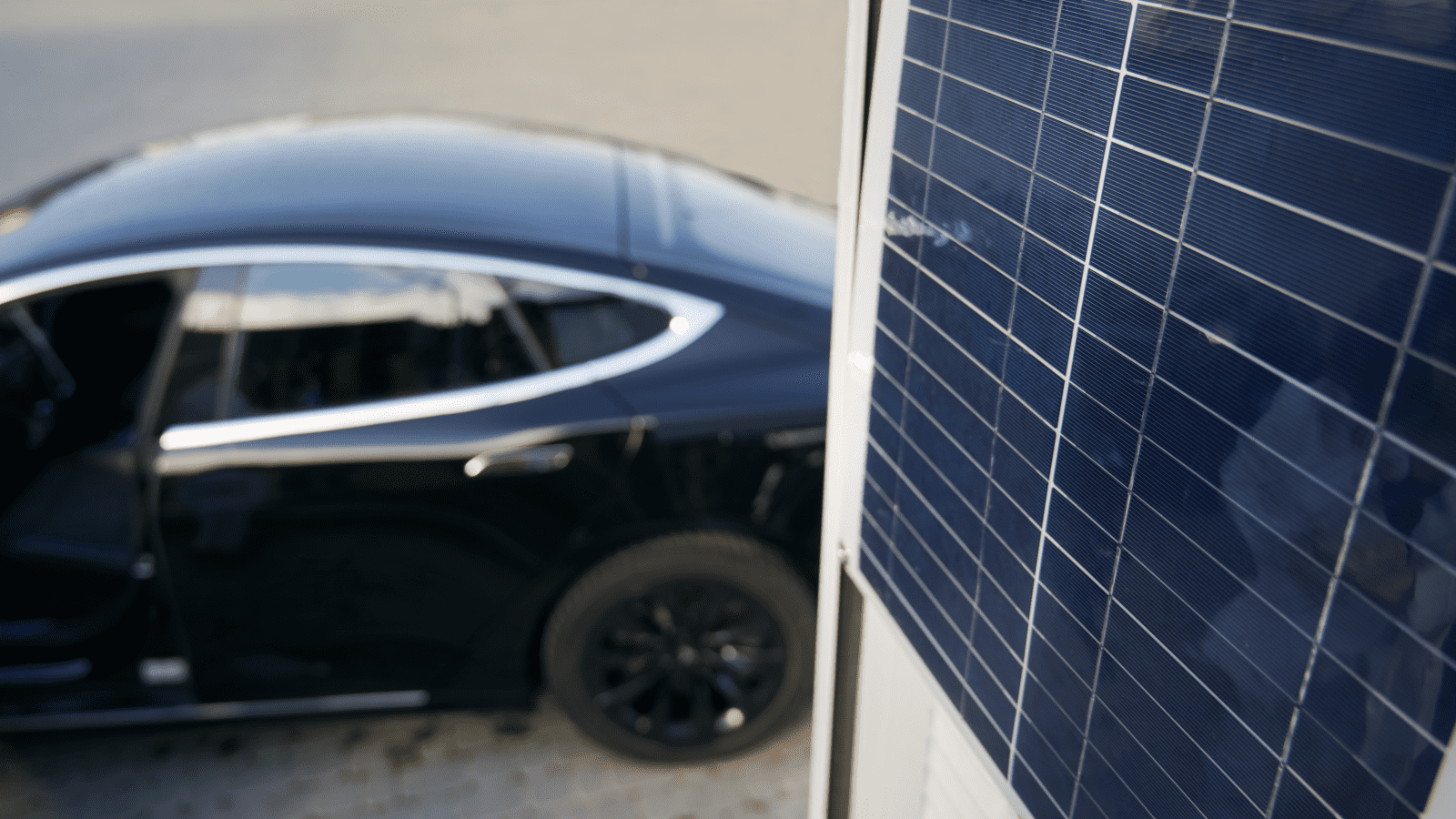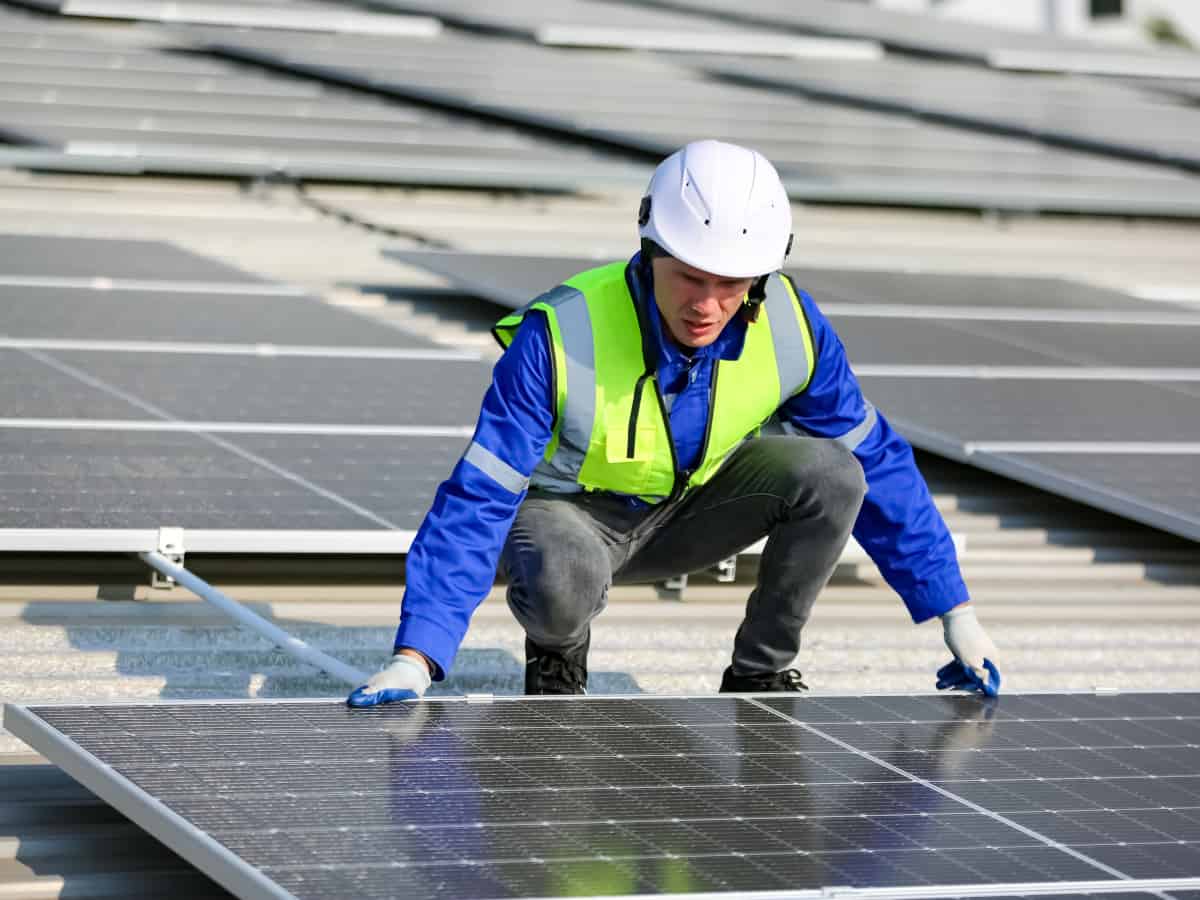
Solar modules, a.k.a. solar panels are devices that is used to convert sunlight into usable electricity. It is made up of a series of solar cells that are typically made from silicon, along with wiring, a metal frame, and a glass cover. Solar panels are typically three feet wide and six feet tall, and each panel weighs around 40-50 pounds.
The active component of a solar panel is in the silicon cells, which are covered by a sheet of glass and held together by a metal frame. When sunlight hits the silicon cells, it activates electrons which begin to flow through the cell. Wires in the cells capture this flow of electrons and combine it with the output of other cells in the panel. There are two main types of solar cells: 60 cell and 72 cell formats. However, some companies are experimenting with new ways to increase efficiency by using “half-cut” panels which doubles the number of cells to 120 and 144 respectively. As technology advances, some manufacturers also have products expanding them to 132 and 156 with their newer 66 and 78 cell modules.
The active component of a solar panel is in the silicon cells, which are covered by a sheet of glass and held together by a metal frame. When sunlight hits the silicon cells, it activates electrons which begin to flow through the cell. Wires in the cells capture this flow of electrons and combine it with the output of other cells in the panel. There are two main types of solar cells: 60 cell and 72 cell formats. However, some companies are experimenting with new ways to increase efficiency by using “half-cut” panels which doubles the number of cells to 120 and 144 respectively. As technology advances, some manufacturers also have products expanding them to 132 and 156 with their newer 66 and 78 cell modules.
When choosing solar panels for your home, it is important to consider the quality, durability, and long-term performance of the product. It is also important to consider the specific needs of your home and budget. It is a good idea to research and compare different options before deciding. A Hayter Solar Specialist will be more than happy to discuss the differences and what manufacturers we have partnered with and why.
Why Invest in Solar?
- You can produce your own power for about the same cost that you are paying today.
- Unlike current hydro rates, your cost of power will not change for the next 30 years.
- You can produce as much power as your home consumes.
- You will still get bills for hydro, they will be offset by credits from your own power production.
- You will reduce your carbon footprint.
- You will increase the value of your home.



Our Newsletter keeps you up to date on all the latest green energy trends for your home! We’ll also let you know about all the latest rebates and promotions! You can unsubscribe at any time.

Hayter Solar Academy
Are you considering switching to solar energy for your home or business? Look no further! In this Solar 101 series, we will provide a comprehensive

Renewable Energy Investment Tax Credits
The 2023 Federal Budget was recently announced and is bringing exciting news for the renewable energy industry across Canada. The industry welcomed the introduction of

